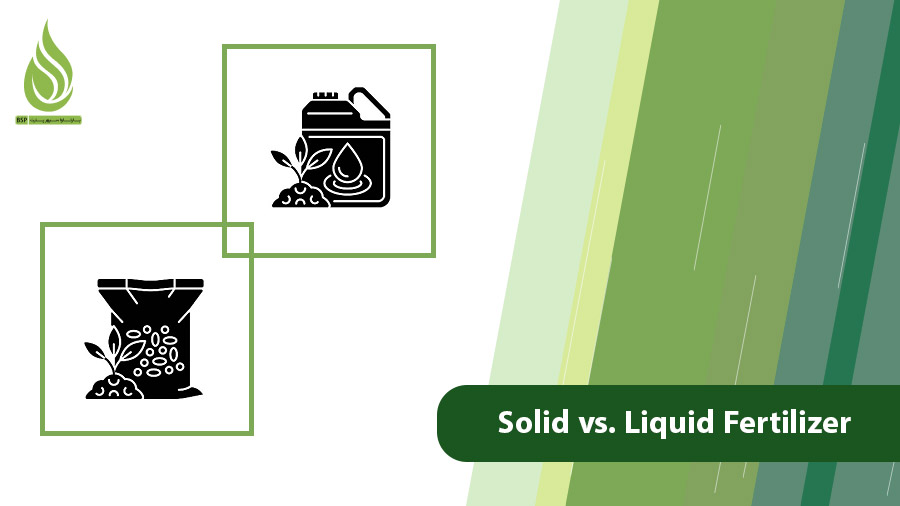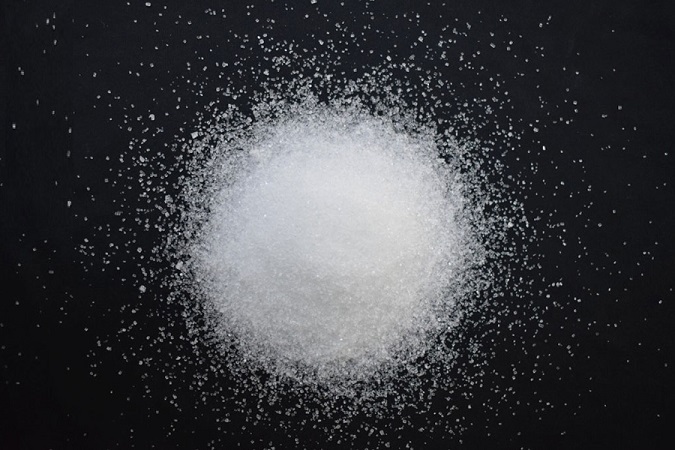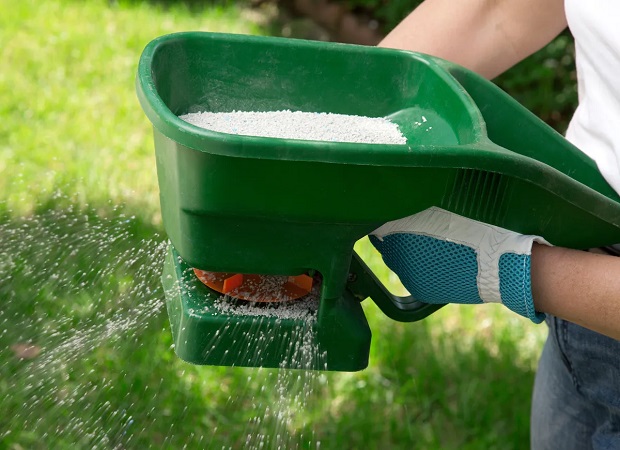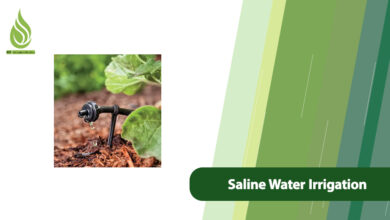
Solid vs. Liquid Fertilizer: Which One is Better for Your Crops?
In agriculture, fertilization plays a crucial role in supporting plant metabolism. Fertilizers can be categorized into two main types: solid fertilizers and liquid fertilizers. Many people often wonder which fertilizers fall into these categories and, more importantly, which type is more effective for our fields. In this article, we will explore the advantages and disadvantages of liquid fertilizer and solid fertilizer, as well as the key differences between them. Let’s dive in!
Common Fertilizers in Agriculture
Agricultural fertilizers supply the essential nutrients that plants and trees need. By using fertilizers, farmers can enhance plant growth, promote root development, and ultimately increase crop yields. Fertilizers are available in two forms: liquid and solid. Some farmers may question which of these two types is more effective and offers greater productivity and stability. The answer isn’t straightforward; first, we need to examine the characteristics of each fertilizer type.
Liquid and solid fertilizers differ not only in their physical forms but also in their composition, usage, storage, shelf life, absorption methods, and more. Despite these differences, both types aim to fulfill the nutritional requirements of plants and enhance the quantity and quality of agricultural products.
Farmers choose between these fertilizers based on land conditions, crop types, and available resources.
What is Solid Fertilizer?
Solid fertilizer consists of nutrient sources in the form of solid particles, available in crystalline, granular, or powdered forms. These fertilizers can contain both natural and chemical compounds. Key nutrients such as nitrogen, phosphorus, and potassium, along with secondary nutrients like calcium, sulfur, magnesium, iron, and zinc, can be formulated as solid fertilizers. When used correctly, solid fertilizers can improve product quality and increase farmers’ profits.

Organic solid fertilizers release nutrients slowly over time, while mineral solid fertilizers, such as crystal ammonium sulfate, decompose more rapidly, providing quicker access to nutrients for plants. However, solid fertilizers typically have a lower solubility rate compared to their liquid counterparts, leading to a gradual release of nutrients.
The method of applying solid fertilizer depends on its form—powdered or crystalline. Manufacturers usually include application instructions on the packaging. Once applied to the soil, solid fertilizers interact with environmental conditions to release nutrients. Some may require watering to aid in soil penetration after application.
Advantages of Using Solid Fertilizer
- Enhances Soil Fertility: Solid fertilizers can improve soil fertility, leading to increased crop yields.
- Long Shelf Life: Compared to liquid fertilizers, solid fertilizers provide nutrients to plants more slowly and consistently, ensuring sustainable nutrition.
- Variety of Formulations: Solid fertilizers can include various compounds of nitrogen, phosphorus, potassium, and micronutrients that help enhance soil quality and promote plant growth.
- Easy Storage and Transportation: These fertilizers are simple to transport, store, and maintain, boasting a long shelf life.
- Cost-Effective: Solid fertilizers are often affordable and provide significant benefits relative to their price.
- Reduced Risk of Leaching: Due to their solid form, the likelihood of nutrients being washed away by rain or irrigation is minimized.
- Versatile Use in Agriculture: Organic and mineral solid fertilizers can be utilized at all stages of agriculture, including land preparation, plant growth, and pre-harvest.
- Minimal Processing Required: Solid fertilizers can be applied directly to the ground without the need for mechanical processing, saving both time and costs.

Disadvantages of Solid Fertilizer
- Limited Usage: Overusing solid chemical fertilizers can lead to pollution of the soil and groundwater.
- Gradual Nutrient Release: Organic manure in solid form dissolve slowly, which may not quickly meet the immediate needs of plants. However, mineral solid fertilizers, like ammonium sulfate, provide nutrients at an optimal pace.
- Uneven Distribution: It can be challenging to evenly spread solid fertilizers across the field, resulting in areas that are nutrient-rich and others that are nutrient-poor.
- Potential for Soil Toxicity: Excessive application of solid fertilizers can lead to nutrient accumulation and possible soil toxicity. This risk largely depends on the accuracy of your fertilization practices; if you apply the right amount of fertilizer with precision, this issue can be avoided.
- Impact on Soil pH: Overuse of certain solid fertilizers can alter the soil’s pH. However, this concern is also applicable to liquid fertilizers.
What is Liquid Fertilizer?
Liquid fertilizer is a solution containing one or more nutrients designed to nourish plants and trees. Its uniform distribution allows for fast and effective absorption by plants. Liquid fertilizers can be applied directly to the soil or plants through irrigation and foliar spraying.

Typically, liquid fertilizers have a high concentration and must be diluted with water before use. They can be classified into two categories: macronutrients and micronutrients. Macronutrients include elements such as nitrogen, phosphorus, and potassium, while micronutrients may include boron and manganese. Some fertilizers combine several elements, so it’s important to check the nutrient content when purchasing.
Advantages of Using Liquid Fertilizer
- High Solubility: Liquid fertilizers dissolve quickly in water, allowing for rapid absorption by plants.
- Adjustable Concentration: The concentration of liquid fertilizers can be adjusted to meet the specific needs of different plants.
- Quick Nutrient Response: Plants respond rapidly to liquid fertilizers, enabling them to utilize nutrients effectively. This is ideal for situations requiring an immediate nutrient boost.
- Even Application: Liquid fertilizers spread uniformly, preventing nutrient accumulation in specific areas.
Disadvantages of Liquid Fertilizer
- Careful Handling Required: Liquid fertilizers require careful maintenance, as they are more prone to spoilage than solid fertilizers. Exposure to heat, light, and air can diminish their effectiveness.
- Caution During Transport: Moving liquid fertilizers demands extra care to avoid spills.
- Risk of Plant Damage: Incorrect application or excessive amounts can burn plant roots or leaves.
- Short-Term Nutrient Source: If you need a stable or semi-stable nutrient source, liquid fertilizer may not be suitable. It is quickly absorbed by plants and can wash away during irrigation or rain, making it less effective for long-term use.
- Higher Costs: Liquid fertilizers tend to be more expensive than solid fertilizers, which can increase agricultural costs.
- Susceptibility to Loss: These fertilizers can be washed away by rain or irrigation, significantly reducing their effectiveness.
- Shorter Shelf Life: Liquid fertilizers typically have a shorter shelf life and expiration date compared to solid fertilizers. If left unused for some time, they can spoil or lose potency.
- Soil pH Changes: Liquid fertilizers can also alter the soil’s pH.
- Environmental Concerns: Improper use of liquid fertilizers can lead to pollution of groundwater and the surrounding environment.
In summary, understanding the advantages and disadvantages of both solid and liquid fertilizers is essential for effective and responsible agricultural practices.
Choosing the Right Fertilizer: Liquid or Solid?
So, which type of fertilizer should you use for your fields and agricultural land—liquid fertilizer or solid fertilizer?
We’ve discussed the features, advantages, and disadvantages of both liquid and solid fertilizers, but you may still be wondering which is better. Both types can provide essential nutrients to plants, but they do have distinct characteristics. Liquid fertilizers typically have a high concentration of nutrients, which can be beneficial. However, if you use more than the recommended dose, there’s a risk of burning the plants.
On the other hand, solid fertilizers must first break down before plants can absorb them. This process makes the absorption of solid fertilizers slower, which can be seen as a more stable option. In contrast, liquid fertilizers are absorbed directly by the plants, offering immediate effectiveness. However, this means their impact is often short-lived.
When it comes to application, using liquid fertilizer is generally easier than applying solid fertilizer. You can mix liquid fertilizer with water and apply it during irrigation or through foliar spraying. With solid fertilizers, you’ll likely need a carrier and a device for spreading the fertilizer. Achieving uniform distribution with solid fertilizers can also be challenging. Still, based on your experience and gardening tools, you might find one type easier to use than the other. Many farmers consider solid fertilizers to be less risky and more straightforward than liquid options.
Storage requirements for liquid fertilizers tend to be more specific. They should be kept in a cool, dry place away from light and heat. In contrast, solid fertilizers are less sensitive to environmental factors such as humidity and dust, allowing for longer storage periods.
Another consideration is that liquid fertilizers can easily wash away and lose nutrients during heavy rain or excessive watering. Solid fertilizers, due to their form, have a lower risk of nutrient leaching.
Both fertilizers have their unique advantages and disadvantages. To make an informed choice between them, consider your specific priorities. Think about the nutritional needs of your plants, soil type, irrigation system, weather conditions, available equipment, and budget. It’s also worth noting that you can use a combination of liquid and solid fertilizers effectively.
Using both types can be an efficient way to meet your plants’ nutrient needs. Some farmers apply solid fertilizer at specific intervals to provide a stable source of nutrients in the soil while using liquid fertilizer for quick nutrient delivery.
Final Conclusion
Liquid fertilizer is more suitable if:
- There’s an urgent need for nutrients.
- Weather conditions are unstable, and you need even distribution.
Solid fertilizer is more suitable if:
- You’re seeking a more sustainable and cost-effective solution.
- You want to gradually enrich the soil with nutrients.
- You have a reasonable budget for fertilizing your agricultural land.
Ultimately, the best approach may be to combine both types of fertilizer to leverage the benefits of each.



